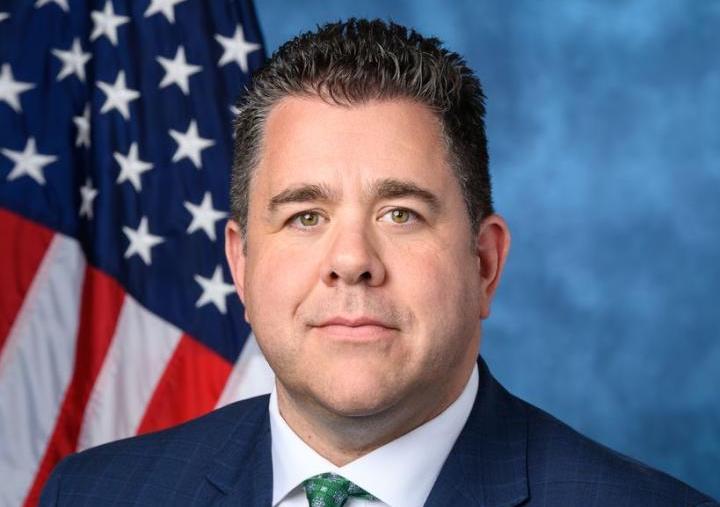Suffolk, East Hampton at Odds Over Proposed Montauk Treatment Plant

A Suffolk County panel flushed the Town of East Hampton’s controversial proposal to bulldoze part of Hither Woods Preserve to make way for constructing a centralized sewage treatment plant to serve Montauk.
At this phase of the plan, the town asked the Suffolk County Parks Board of Trustees, which oversees the preserve, to consider a land swap in which 18 acres of open space near the Montauk Transfer Station would be traded for 14 acres of woodlands at Hither Woods Preserve, but the trustees voted it down on February 23. While town officials say that the estimated $75 million wastewater treatment facility is needed to replace the current antiquated cesspools that contribute to water quality degradation across Suffolk, many environmentalists oppose building one on parkland.
“The decision of the parks trustees should send a clear message to the town board,” said Richard Whalen, president of the Coalition for Hither Woods, a Montauk-based nonprofit environmental group. “It is time the board laid the Montauk sewer project by the wayside. There are better and cheaper ways to improve Montauk’s environment than to build a centralized sewer system for the hamlet.”
The town’s push to build a sewage system for Montauk comes amid a countywide and statewide initiative that also aims to replace aging cesspools that studies have shown are a leading cause of excess algae blooms that spark brown tides and fish kills, collapsing local fisheries and depressing property values. The issue has been snowballing since Suffolk’s Southwest Sewer District corruption scandal during the 1970s made it politically unpopular to build more sewage lines for decades — leaving three quarters of the county without sewers as a result.
In Montauk’s case, the issue is not just cesspools leaching into the groundwater and eventually polluting surrounding surface waters. There is also concern about the impact climate change-induced sea level rise will have on cesspools at properties closest to the shore. Although critics suspect that the renewed drive for sewers is also a ploy to pave the way for more development under the guise of protecting the environment.
“Many of the existing onsite systems within commercial areas are not constructed in accordance with current standards and do not function properly,” town officials said in a December presentation detailing the proposal and officials’ rationale for it.
Across the greater Long Island area, brown tides and similar algae blooms have contributed to a record 50 fish kills — well above the average of five annually — that were recorded in summer 2022 in waterways, according to a Stony Brook University study released in October. But Whalen questioned if the sewage plant would turn the tide for Fort Pond and Lake Montauk, arguing that the town’s own engineering consultants estimated that placing sewers in downtown Montauk would reduce the total nitrogen input to Fort Pond by less than 15%.
Regardless, the town’s process is essentially at the starting line and the town’s next step is unclear after the parks trustees voted 10-0 against the land swap with two abstentions. The land swap was among the first action items on the town’s tentative to-do list to move the plan forward. The town is still in the process of reviewing the plan to meet New York State Environmental Quality Review Act (SEQRA) to determine its environmental impact.
It also must hold public hearings, put a referendum on ballots to ask voters if they approve creating a sewer district, secure funding and get plans approved — with construction not projected to start until sometime between 2028 and 2030, should the timeline stay the course. And should the town succeed in reviving the land swap, that portion of the plan would require state and county legislative approval, although local lawmakers have proven noncommittal so far.
“I agree with the parks trustees,” said state Assemblyman Fried W. Thiele Jr. (D-Sag Harbor). “Proposing park alienation at this stage for this project was very premature. [State Sen. Anthony Palumbo (R-New Suffolk)] and I came to the same conclusion by not introducing the needed legislation for the land swap. The town must first fully comply with … SEQRA. SEQRA comes before the decision, not after. All alternatives must be fully assessed before determining the best option. SEQRA also guarantees the involvement of the public in the decision-making process.”
The issue is likely to be among the issues on the campaign trail this fall since East Hampton Town Supervisor Peter Van Scoyoc, the lead proponent of the plan, is not seeking re-election, leaving the future of the proposal up to his successor. And the debate also comes as the town is already mired in legal battles over plans to enact new rules on aircraft at the East Hampton Airport, public access to Truck Beach in Napeague and the placement of offshore wind farm cables.
With so many unanswered questions for such a complex project that is nearly a decade from seeing the light of day — if at all — it’s unclear if the Montauk sewer plant plan is just bubbling up or already circling the drain.
“We don’t know if the parks trustees’ vote will end East Hampton Town’s almost obsessive two-year quest to build a centralized sewer system for Montauk, but we hope so,” Whalen said. “That decision is now up to the town board, which needs to hold its deliberations in public.”



